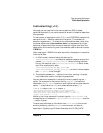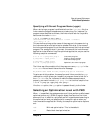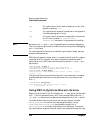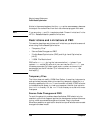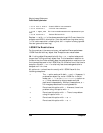
284 Chapter 8
Ways to Improve Performance
Profile-Based Optimization
Using The flow.data File
By default, the code generator and linker look for the flow.data file in
the current working directory. In other words, the flow.data file
created during the profiling phase should be located in the directory
where you relink the program.
Specifying a Different flow.data File with +df
What if you want to use a flow.data file from a different directory than
where you are linking? Or what if you have renamed the flow.data file
— for example, if you have multiple flow.data files created for different
input sets? The +df option allows you to override the default +P behavior
of using the file flow.data in the current directory. The compiler passes
this option directly to the linker.
For example, suppose after collecting profile data, you decide to rename
flow.data to prog.prf. You could then use the +df option as follows:
$ cc -v -o prog +P +df prog.prf prog.o
/usr/ccs/bin/ld /usr/ccs/lib/crt0.o -u main -o prog \
+df prog.prf prog.o -P -lc
The +df option overrides the effects of the FLOW_DATA environment
variable.
Specifying a Different flow.data with FLOW_DATA
The FLOW_DATA environment variable provides another way to override
the default flow.data file name and location. If set, this variable
defines an alternate file name for the profile data file.
For example, to use the file /home/adam/projX/prog.data instead of
flow.data, set FLOW_DATA:
$ FLOW_DATA=/home/adam/projX/prog.data
$ export FLOW_DATA Bourne and Korn shell
$ setenv FLOW_DATA /home/adam/projX/prog.data C shell
Interaction between FLOW_DATA and +df
If an application is linked with +df and -P, the FLOW_DATA environment
variable is ignored. In other words, +df overrides the effects of
FLOW_DATA.




